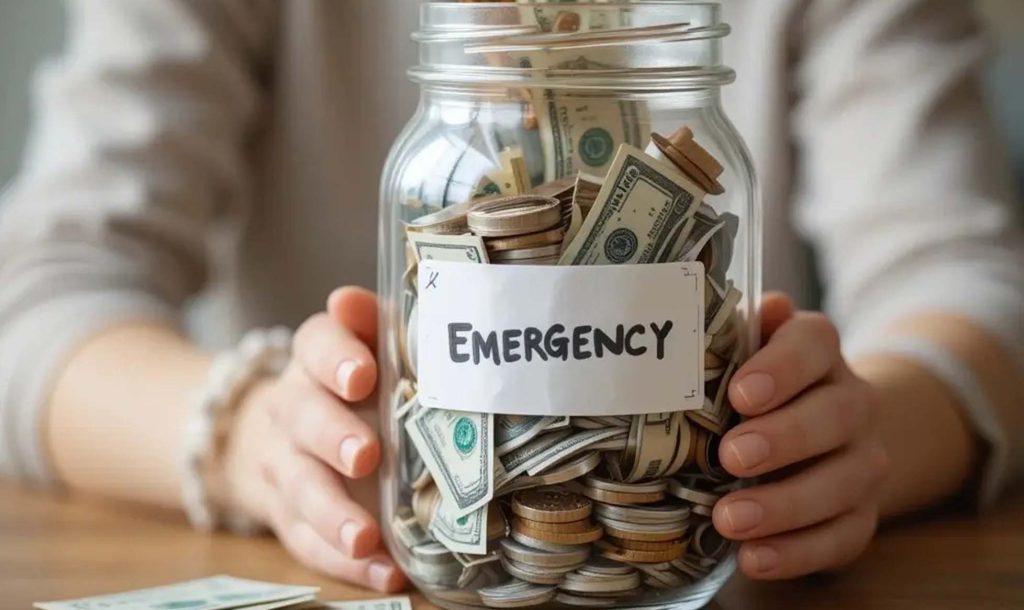How to Set Up an Emergency Fund: Building a Safety Net for a Worry-Free Life
In today’s world, unexpected events can happen at any time, whether it’s sudden job loss, an unforeseen illness, or a family emergency. Life’s risks are almost omnipresent. An emergency fund, as an effective tool for mitigating these risks, can provide essential financial protection for individuals and families, preventing them from being caught off guard in times of crisis. This article will explore in detail how to set up an emergency fund, including how to assess your needs, determine the amount to save, and how to manage these funds.
1. What is an Emergency Fund?
An emergency fund refers to the money set aside to cover unexpected risks and emergencies in life. Its primary function is to provide financial support during times of crisis, such as job loss, major illness, or accidents, helping individuals and families navigate through difficult times.
An ideal emergency fund is not only a reactive measure for emergencies but also plays a crucial role in long-term financial planning. It can alleviate external pressures and allow people to face challenges with financial stability.
2. Standards for Setting Up an Emergency Fund
The first step in setting up an emergency fund is to assess how much money is needed. Generally, the amount of an emergency fund should cover at least three to six months’ worth of living expenses. There is a clear logic behind this standard.
2.1 Assessing Living Expenses
Living expenses are the foundation for calculating your emergency fund. You need to first determine your monthly fixed expenditures, which include rent or mortgage payments, utilities (water, electricity, gas), transportation, groceries, insurance, and children’s education costs. These are all essential expenses that must be paid every month.
For example, if your monthly living expenses amount to $5000, then a three-month emergency fund would require $15,000, while a six-month emergency fund would require $30,000. This is just a rough estimate; the exact amount should be based on your personal income level and family structure.
2.2 Impact of Family Members and Lifestyle
If you have children or elderly relatives at home, or if certain family members have health conditions, you may need to set aside more funds for your emergency fund. For instance, if your family includes young children or someone in need of long-term care, your living expenses will significantly increase, and your emergency fund should be adjusted accordingly.
Additionally, your lifestyle can influence the amount needed for your emergency fund. If you frequently travel or engage in high-cost activities, these discretionary expenses should also be factored into your emergency fund total.
3. Assessing Your Financial Situation

The next step in setting up an emergency fund is evaluating your current financial situation. It’s important to review your assets, liabilities, income, and expenditures to determine how much you can save and at what rate.
3.1 Balancing Income and Expenditures
A stable income is the foundation for building an emergency fund. If your income is unstable—such as if you work as a freelancer or have seasonal employment—you may need a larger emergency fund to account for income fluctuations.
At the same time, you should closely examine your spending habits. Often, high consumption levels or unnecessary expenditures can hinder your savings progress. Therefore, when setting up an emergency fund, it’s essential to ensure that you have some surplus every month and that you can consistently save.
3.2 Debt Situation
Debt plays an important role in determining how much to allocate toward an emergency fund. If you have significant debt, such as credit card balances or loans, it’s better to focus on reducing your debt, especially high-interest debt, before saving for an emergency fund. While having debt doesn’t mean you should skip setting up an emergency fund, prioritizing high-interest debt reduction can ease future financial pressure, enabling you to build your emergency fund more comfortably.
4. How to Create a Savings Plan
Once you have determined your emergency fund target, the next step is to develop a detailed savings plan. You need to decide how much to save each month and how to store these funds in an efficient and safe manner.
4.1 Setting Monthly Savings Goals
If your emergency fund goal is $30,000, and you plan to accumulate this amount in six months, you would need to save $5000 each month. To ensure you meet your target, you need to plan your monthly income and expenses carefully, prioritizing savings.
For example, you can reduce discretionary spending, such as dining out or entertainment, and allocate the savings to your emergency fund.
4.2 Flexibility and Automation
A savings plan needs to have flexibility, as life circumstances can change. To ensure that you continue saving, you can set up an automatic transfer feature, where a portion of your monthly income is directly transferred to a savings account. This helps prevent funds from being spent on impulse purchases or forgotten savings.
At the same time, it’s essential to maintain a certain level of flexibility. For instance, if your income is higher than expected one month, you can increase your savings contribution; if there are other urgent expenses, you can adjust the savings plan accordingly.
5. Where to Store Your Emergency Fund
The location of your emergency fund is critical to both its availability and security. Your emergency fund should not only be easily accessible when needed, but it must also be stored in a secure place.
5.1 Savings Accounts vs. Investment Accounts
The most common approach is to store your emergency fund in a high-yield savings account. Savings accounts carry relatively low risk, and funds can be accessed at any time. However, the interest rates on standard savings accounts are typically low, which may not keep up with inflation. Therefore, it may be worth considering options like money market accounts or short-term fixed deposits.
If you choose to store your emergency fund in an investment account, you need to be cautious about liquidity and risk. Generally, an emergency fund should not be invested in volatile assets like stocks or bonds, as market uncertainties could make it difficult to access your funds in an emergency.
5.2 Other Safe Storage Options
In addition to savings accounts, there are other low-risk, liquid options to consider, such as short-term government bonds or high-yield money market funds. These options usually offer better safety and liquidity than standard savings accounts while providing a higher return.
6. Regular Review and Adjustment of Your Emergency Fund

Once your emergency fund is set up, it doesn’t mean that you can forget about it. Life circumstances change constantly—income, expenses, and family situations may evolve—and your emergency fund needs to be reviewed and adjusted regularly.
6.1 Changes in Living Costs
As time passes, living costs may increase. To account for rising expenses, your emergency fund target may need to be adjusted accordingly. For example, if rent increases, medical costs rise, or your children start school, these factors may lead to higher monthly expenses.
6.2 Changes in Family Members
The number of people in your household can affect your emergency fund requirements. If a new family member is born or if a parent’s health condition changes, you may need to provide more financial support for the family. As a result, you will need to adjust your emergency fund target accordingly.
6.3 Changes in Income
Changes in income—whether an increase or decrease—also impact the amount needed for your emergency fund. If your income rises, you can speed up your savings progress; if your income falls, you may need to reduce discretionary spending in order to maintain your savings plan.
7. Principles for Using Your Emergency Fund
The core purpose of an emergency fund is to deal with unforeseen events, but it is not intended for everyday expenses. When using your emergency fund, strict principles must be followed.
7.1 Urgency and Necessity
An emergency fund should only be used for genuine emergencies, such as unexpected medical bills, accidents, or job loss. Predictable expenses, such as routine repairs or family celebrations, should not be covered by the emergency fund.
7.2 Avoiding Misuse
Even in urgent situations, it’s important to avoid misusing your emergency fund. For non-emergency expenses, you should seek other ways to cover the costs, ensuring that your emergency fund doesn’t run out prematurely.
An emergency fund is not just a component of personal financial planning; it also represents a sense of psychological security. By properly setting up your emergency fund, you can effectively reduce the stress of life’s uncertainties, helping you face unexpected events with greater confidence and peace of mind.
